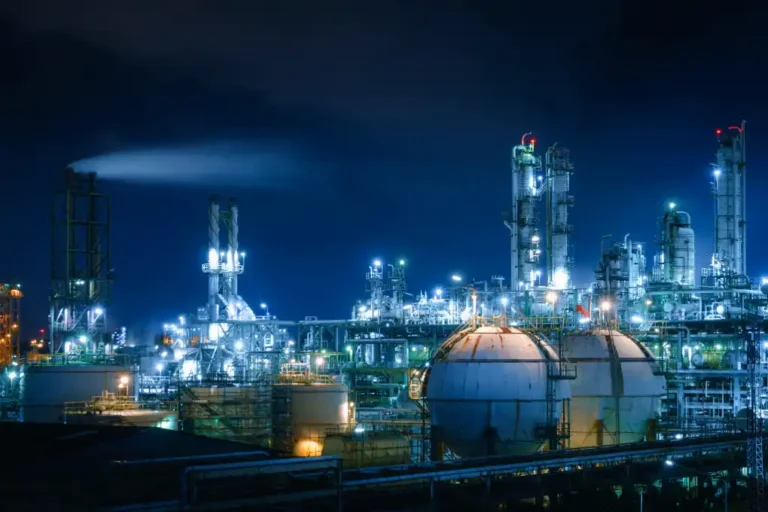
What is Carbon Capture and Storage (CCS)?
20 May 2024
Carbon dioxide capture and storage (CCS) is a way of mitigating the contribution of fossil fuel emissions by capturing and subsequently storing the carbon dioxide (CO₂).

What is CCS?
Carbon dioxide capture and storage (CCS) is a way of mitigating the contribution of fossil fuel emissions by capturing and subsequently storing the carbon dioxide (CO2).
Global climate change is caused by such emissions, and it is an increasingly important and pressing issue for the world. In 2015, countries agreed to limit warming to well below 2°C and aim for 1.5°C, and the Intergovernmental Panel on Climate Change (IPCC) and International Energy Agency (IEA) say that CCS is key in achieving the goals. In the pursuit of net-zero emissions by 2070 the International Energy Agency says that CCS should contribute around 15% of the effort, and 25% of the effort if 2050 is the target (IEA, Energy Technology Perspectives, 2020).
CO2 makes up 74% of global greenhouse gas emissions according to Climate Watch, with 89% of this CO2 coming from the use of fossil fuels in power generation, industry and transportation. Each regular power plant is capable of emitting several million tonnes of CO2 every year. Other industrial processes, such as oil refineries, cement works and metal production, also emit large amounts of CO2 from each plant. These emissions could be reduced to close to zero by capturing and storing the CO2.
The process of CCS is a suite of existing, proven technologies that make up three main components; the capture of CO2 from ‘sources’, the transport of the CO2 to ‘sinks’ and the permanent, safe storage of the CO2 deep underground in geological formations.
Capture
There are four main ways to capture CO2 from power plants:
- Directly where the plant process produces pure CO2 streams, such as ammonia and ethanol plant.
- Post-combustion – which takes place after the normal combustion process has taken place (so after the fuel has been burnt to produce electricity) and uses a solvent to ‘wash’ the exhaust gases of CO2.
- Pre-combustion – is done by removing the CO2 from the raw fuel.
- Oxyfuel combustion – which burns the fossil fuels in oxygen to produce water and CO2, which are separated and removed from the flue gas.
The methods used for the capture of CO2 use well-known technologies that can effectively stop the amount of emissions that would normally be released into the atmosphere.
Transport
The transport of CO2 can be done by pipelines or by shipping. The CO2 that has been captured from the power plants is compressed and turned into a fluid state, known as supercritical CO2. It is then moved via thick carbon steel pipelines or taken in a specially-equipped ship to the chosen site of storage.
Storage
Geological storage formations are chosen for the storage of CO2 depending on their physical properties. To safely store CO2 the formation must have a suitable ‘reservoir’ rock to receive the CO2 and an impermeable ‘caprock’ on top of the reservoir to prevent the CO2 from rising upwards underground. The reservoir rock is porous, which means that there are tiny little spaces between the grains that the CO2 gets trapped in; the caprock is non-porous, so this means there are no spaces at all in between the rock grains, so the CO2 cannot enter this top, capping rock.
These geological formations are either deep saline formations, depleted oil and gas reservoirs, or deep unmineable coal seams.
The geological storage formations are not just a few metres under the ground; they are always at depths greater than 800 metres. This is not only for security of storage, but also because the effectiveness of CO2 storage increases with depth and this means that the captured CO2 can be permanently stored in these geological formations. The underground storage of CO2 has actually been taking place for many decades already in the oil and gas industry, for ‘enhanced oil recovery’ and this practice, along with many large-scale and research projects doing CO2 storage, shows that CO2 CAN be stored safely and permanently underground.
What is the current status of CCS?
As of 2020, there are 51 large-scale CCS facilities all over the world. Work is also ongoing at smaller, pilot-scale locations to help us learn even more about the important technologies in CCS that are needed to help combat the amount of emissions entering the atmosphere. So far, over 260 million tonnes of human-induced CO2 has been safely stored which goes to show that CCS can really make a difference to helping combat climate change.
If you have any questions about CCS or the IEAGHG programme, please contact us and our team of experts are here to help.
Other articles you might be interested in
Get the latest CCS news and insights
Get essential news and updates from the CCS sector and the IEAGHG by email.
Can't find what you are looking for?
Whatever you would like to know, our dedicated team of experts is here to help you. Just drop us an email and we will get back to you as soon as we can.
Contact Us Now
